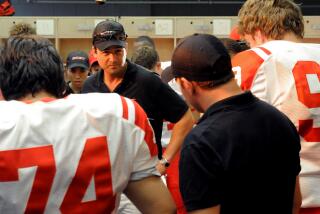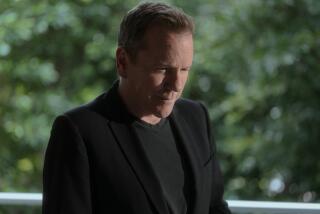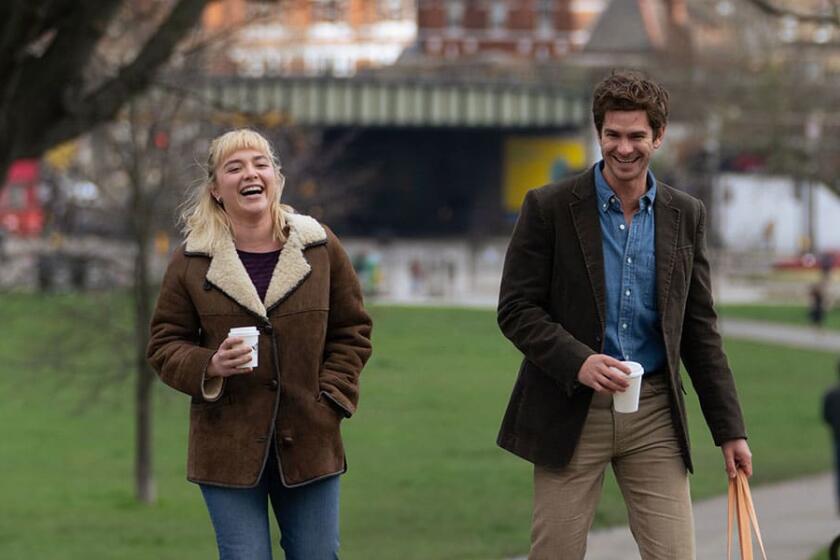Bogdanovich’s ‘Last Picture Show’ as He Intended It : The director has added and re-edited scenes to deliver the film he wanted in 1971. He also explains many of its technical and artistic components.
Peter Bogdanovich’s “The Last Picture Show,” a landmark film when it was released in 1971, comes back in 1991 as a landmark of another sort. The Criterion Collection film released by Voyager Co. on laser disc ($99.95) is in reality a new film, virtually the first time a director has recut a picture just for laser disc.
Even the laser album cover shouts with freshness. It was taken from a scene--one of Bogdanovich’s favorites, left out of the original film--in which a bemused Timothy Bottoms, gleeful Jeff Bridges and knowing, manipulative Cybill Shepherd sing, carefree, in Shepherd’s convertible.
Other directors have gone back to the cutting room to redo films--Steven Spielberg’s “Close Encounters of the Third Kind” and Francis Ford Coppola’s “The Godfather” and “The Godfather Part II” recut in sequence for television come to mind. But these director’s cuts were created for new theatrical or TV releases that reached much larger audiences, then reissued on tape or laser.
The new “Last Picture Show,” however, has been recut by Bogdanovich only for the Criterion laser disc.
This is the movie Bogdanovich says he envisioned. It restores trims made for the initial theatrical release to bring it in under two hours. The wide-screen Criterion disc includes not only seven minutes of previously unseen footage, but also scenes that have been re-edited, lengthened, repositioned. Essentially, it is a new film. Music not heard on the videotape version is also offered.
“I always felt the picture was a bit jerky in its original form,” Bogdanovich reveals on the specially produced analog audio track. “It wasn’t complete to me.”
The enthusiasm of a bright and shining young cast working as a fine ensemble infuses the film. Based on a novel by Larry McMurtry, who shares screenplay credit with Bogdanovich, it chronicles the coming of age of teen-agers in a dying, small, ‘50s Texas town that has stifled their parents.
It was the first movie for many--Randy Quaid, Shepherd, Bottoms--and only the director’s second studio film. While Bridges had acted some, this was a breakthrough film for him; for Ben Johnson and Cloris Leachman, it brought best supporting actor and actress Oscars; for Ellen Burstyn, a New York Film Critics best supporting actress award, and for Eileen Brennan and Clu Gulager, additional attention.
Bogdanovich tells us on the analog track, which can be played over the film and which also includes interviews with Shepherd, Quaid and Leachman, that he reinserted and recut scenes to better get at the essences of characters and explain motivation. The new cut does answer questions left hanging from the original version. After seeing the film the way he intended, it’s painful to envision it without the added, recut scenes.
Among them:
* The nude swimming scene, which Shepherd says was very difficult for her to do. She says she appreciated the aesthetic reasons for the scene but feared stills would end up where she didn’t want to see them. They did, in Playboy, which she sued. As a result of her legal battle, actors now can control the use of such footage, she says.
* The initial meeting between Timothy Bottoms and the older, married Leachman and later scenes of their affair.
* The pool-hall lovemaking scene, and its aftermath, between Shepherd and Gulager, the longest scene put back in the film. “Without it people didn’t like her character or understand it as well,” Bogdanovich explains. When he went to recut the scene, the audio track was missing from the dailies, so Shepherd re-looped it when doing “Texasville” 20 years later.
* Bottoms driving by the three places in town from which Johnson bans him--his cafe, pool hall and theater--emphasizing his loneliness and emptiness.
The intimacy of the laser format makes it seem as if Bogdanovich is sitting in the room with you, telling you, and only you, little secrets about the film and the creative process. He brings to it his director’s and critic’s understanding of the cinema, revealing the difficulties of shooting specific scenes, why some shots were done in particular ways, how in various scenes he offered a “tip of the hat” to Orson Welles or John Ford. It’s a private crash course in Filmmaking 101.
Among tidbits we pick up along the way, in addition to the scripts for “The Last Picture Show” and “Texasville” and screen tests (that don’t include the principals) and trailers:
* Bogdanovich favored black-and-white photography, beautifully executed by Robert Surtees, because it gave the small town a “desolate, empty” feeling that is missing in the more recent “Texasville” sequel where color makes the town look “kind of pretty.”
* John Ritter gave an excellent reading for the Timothy Bottoms role, and Bogdanovich strongly considered casting him--and his father, Tex Ritter, in the Ben Johnson role. Though very happy with the film and Bottoms’ and Johnson’s performances, Bogdanovich still wonders what might have been. . . .
* Coca-Cola did not give Bogdanovich permission to use the soft drink in the film, so he switched to Dr Pepper, making sure that there wasn’t a Coke or Coke sign anywhere in sight. Ironically, the film was never released on video while Coca-Cola owned Columbia Pictures.
* Bogdanovich wrote the Johnson funeral scene on the morning of the shoot, after returning from the weekend funeral of his own father, who died unexpectedly during the 10-week shooting of the film.
* Leachman says that the director gave her, Burstyn and Brennan their choice of roles in the film, feeling that all of them could handle any of the roles.
* For Shepherd, it was a “hot,” “sexy” film; contrary to the expectations of many, the three more established actresses on the film were supportive and helpful to her.
* The director had cast a different actor to play the retarded young boy but recast the part with Sam Bottoms when he spotted him on location, there to visit his brother.
* Bogdanovich considered using “Wagon Master” for the last picture show but settled on “Red River,” which was set in Texas and mythologized the West, where there now were “no more frontiers or adventures.”
The irony isn’t lost in “The Last Picture Show”--partly the story of a movie house falling victim to television--being resurrected on a format that, along with cable and the VCR, threatens television the way TV was thought to threaten movies.
More to Read
Only good movies
Get the Indie Focus newsletter, Mark Olsen's weekly guide to the world of cinema.
You may occasionally receive promotional content from the Los Angeles Times.










